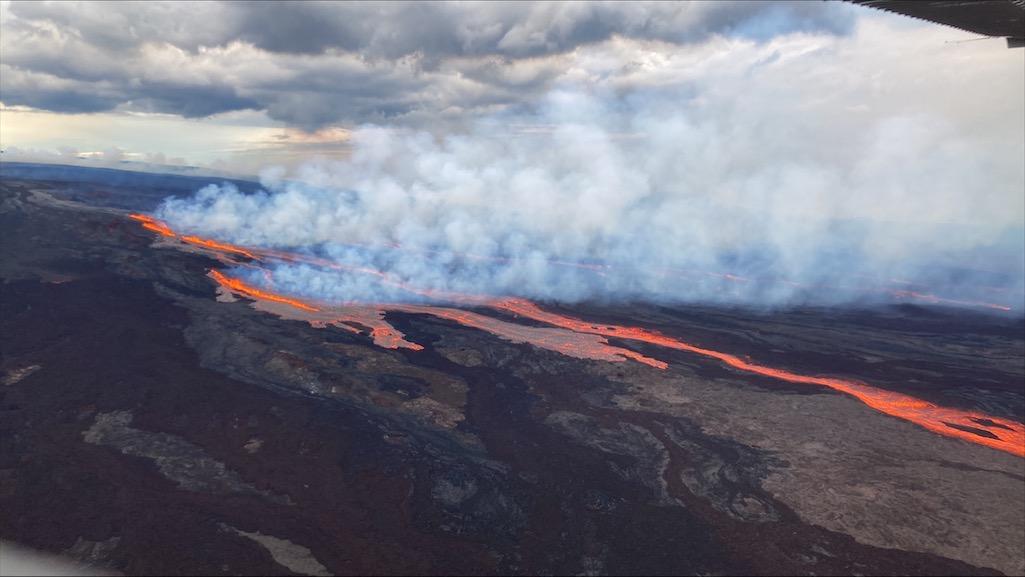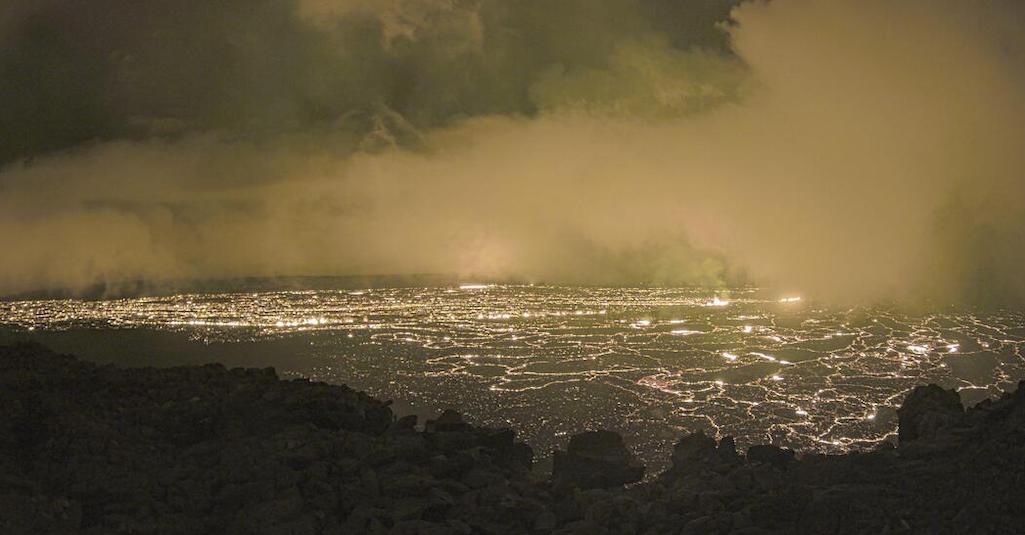
Lava flow on the Northeast rift zone of Mauna Loa, which started erupting late Sunday night/USGS

Lava erupting from the summit caldera of Mauna Loa, Hawai'i Volcanoes National Park / USGS photo
After nearly four decades of silence, Mauna Loa, the world's largest active volcano, has begun to erupt on the roof of Hawai'i Volcanoes National Park.
The eruptions started late Sunday night, according to the U.S. Geological Survey. Remote cameras captured bubbling lava seen in Moku‘āweoweo, the summit caldera of Mauna Loa. The lava was contained within the summit area and was not threatening downslope communities, a USGS release said. Howevers, winds might carry volcanic gas and possibly fine ash and Pele’s hair -- thin strands of volcanic glass -- downwind.
Based on past events, the early stages of a Mauna Loa eruption can be very dynamic and the location and advance of lava flows can change rapidly, the agency said. If the eruption remains in Moku‘āweoweo, lava flows will most likely be confined within the caldera walls.
However, if the eruptive vents migrate outside its walls, lava flows could move rapidly downslope. The Hawaii Volcano Observatory staff was in close consultation with emergency management partners and would provide further updates on activity as needed.

This image was captured at 4:31 a.m. local time Monday/USGS

At sunrise Monday the volcano's glow was easily viewed from the Hilo side of the Big Island/Sean Repanshek
Residents at risk from Mauna Loa lava flows should review preparedness and refer to Hawai‘i County Civil Defense information for further guidance. Residents with questions about emergency response and resources that might be available to assist those at risk should consult https://www.hawaiicounty.gov/departments/civil-defense/active-civil-defe....
Hawai‘i Volcanoes National Park has closed the Mauna Loa summit area to visitors.
The volcano last erupted in 1984, and sent a stream of lava that flowed to within four miles of Hilo.
Rising to more than 2.5 miles (4 kilometers) above sea level, Mauna Loa, a shield volcano, is the largest active volcano on Earth. According to the USGS, the Hawaiian name "Mauna Loa" means "Long Mountain." It is among Earth's most active volcanoes, having erupted 33 times since its first well-documented historical eruption in 1843, the agency adds.
Kīlauea, Mauna Loa's sister volcano in Hawai'i Volcanoes National Park, erupted for months in 2018, with the national park suffering significant damage, as did surrounding communities. Those eruptions covered nearly 13 square miles of the island with lava flows, which also forced thousands to evacuate their homes; more than 700 homes were destroyed by the eruptions. Damage estimates ran to at least $100 million, with the park's Crater Rim Drive significantly cracked and buckled while the park's Jagger Museum sustained significant structural damage from thousands of related earthquakes.
A summit eruption that began within Kīlauea's Halema‘uma‘u crater on September 29, 2021, is ongoing, the USGS noted.

 Support Essential Coverage of Essential Places
Support Essential Coverage of Essential Places






